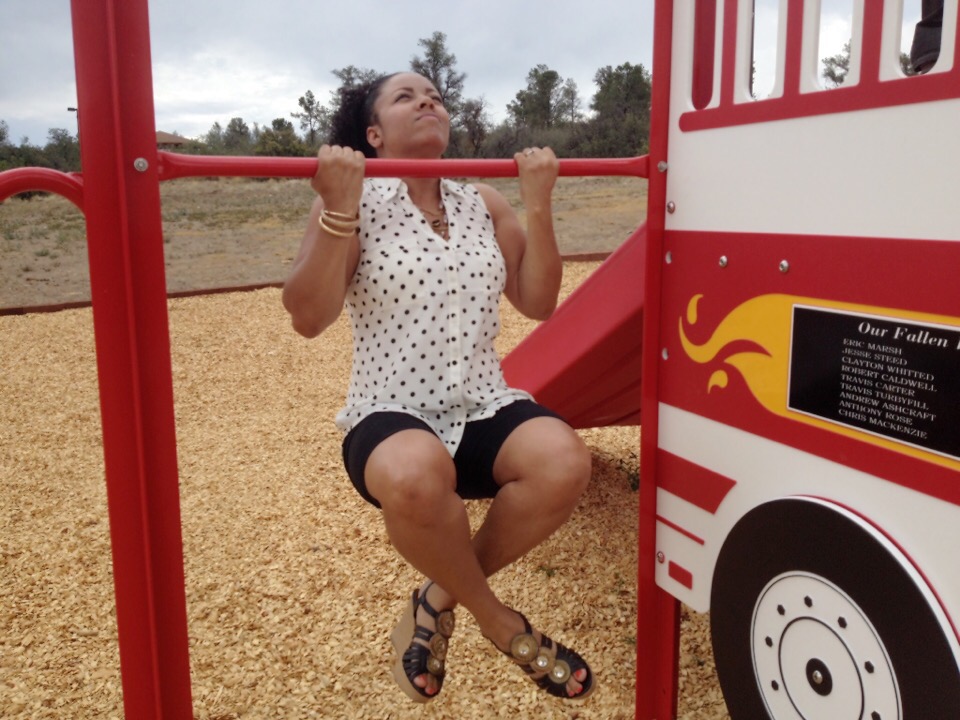
by EM2WL | Jun 10, 2015 | Building Muscle, Strength Training, Uncategorized
 What lift/exercise is the ultimate test of strength?
What lift/exercise is the ultimate test of strength?
Depending on who you ask, you’ll likely hear different answers to the question. Most trainers (myself included) will agree on the basic beasty moves as gold standards of testing strength: bench, overhead press, barbell row, squat and deadlift. But when I see someone (man OR woman) squatting, benching, rowing or deadlifting massive amounts of weight, then flailing like a fish out of water trying to pull-up their own body weight, it makes me wonder if the pull-up is the ultimate strength test exercise. Not only do pull-ups require well-developed back strength, but they also require grip, forearm and core strength, too.
My clients know that I’m a stickler about tackling pull-ups, no matter how weak they feel they may be in their upper body. The guys may feel like it has nothing to do with the overall chest/abs/bicep physique they covet, while ladies tend to be afraid of getting a “wide” back (v-taper) for fear of looking too “manly.” Instead of bicep curling into oblivion, many men would be fairly impressed by the bicep development they would get from merely tossing a few sets of chin-ups into their arm routine. Ladies would do well to know that it’s VERY hard to develop a v-taper without properly periodized nutrition and training for that precise purpose. Not to mention that developing one would actually give more women (especially pear shapes), a MORE feminine, hourglass shape. Whatever the case for not wanting to do pull-ups, the benefits of developing this skill go far beyond the physique changes.
Most women are inherently weaker in the upper body when compared to the lower, and in the back side of their body when compared to the front. We ladies tend to spend most of our lives in anterior or “forward” motion: we push strollers and shopping carts, nurture children in our wombs, hold babies, pick our toddlers up and down, type, text, have boobs, etc. Essentially, we are always pushing, holding, handling weighted objects, or attending to general business on the front side of our bodies.
The repetitive motion of these movements causes the muscles at the front part of our bodies (pecs/anterior shoulders) to tighten (shoulder to shoulder across the boobs), and the muscles across the back (shoulder to shoulder across the upper back) to become lax from under-use. Going into the gym and regularly maxing out on your bench, with little attention to the back side of your body, can horribly exasperate the problem. This leads not only to increased shoulder pain, but also to a forward rounded shoulder (the dreaded “hunchback” look) as we age. Exercises such as deadlift, row, and yes – pull-ups, that challenge your back from all angles is essential to a well rounded routine and an upright body that screams confidence!.

Put in pull up practice…everywhere!
Pull-ups are NOT easy!
Back in the day (can’t believe I’m old enough to say that! LOL) pull-ups were part of our education. They weren’t necessarily mandatory, but we were tested on them at least once/year and it was generally accepted that it was something that most boys should be able to do with ease. Girls were often graded by how long they could “hang” on the bar. With the more relaxed Physical Education requirements in recent years, it’s not uncommon to see boys become men who can’t even do one pull-up (my husband cringes at the sight of my nephews’ attempts at pull ups). If men are struggling with pull-ups, it’s no wonder us women tend to be, too. Simply jumping up to a pull-up bar and hanging on for dear life can seem more taxing than it was in our youth, but learning to do body weight pull-ups isn’t impossible!
But it DOES take patience and persistence, which our generation seems to have lost…
The amount of time it takes to learn to do a pull-up will vary – depending on factors such as current fitness level, consistency, body weight, etc. Obviously, the more you weigh, the more you have to pull-up, and vice versa. But don’t get tempted to use your weight as an excuse (“I can’t do pull ups, I’m too heavy!” …”when I lose weight I’ll learn” or “but they’re so light, it’s easy for them!!”), start practicing NOW. Pulling your body weight is pulling your body weight… per capita, it’s tough for everyone. Take your time, be consistent, and build up your strength. You CAN eventually do a full pull-up.
Then 2…4…10 and so on!
Ready to dive in?
Let’s talk equipment.

Simply hanging from the bar is the first and hardest step!
If you have a membership at your local gym, they should have you covered (in which case, feel free to scan/speed read through this next bit).
If pullups aren’t currently a part of your routine, you may not have an actual pull-up bar, or even access to one. I highly recommend ultimately investing in a pullup bar like the iron gym or similar apparatus (they’re fairly cheap), if you plan on working out at home exclusively. I’m a home exerciser myself, and my bar is worth it’s weight in gold!
But until then, enjoy homemade versions, and the great outdoors… always keep your eye out for pullup “bars” hidden in plain sight to work on perfecting your craft ;)
Some places you can practice your pull up skillz:
- monkey bars
- stairs with no riser (like in outdoor apartment buildings)
- under chairs/tables
Beginner Pull up Prep
The biggest mistake that most newbies make with pull ups is simply walking up to the bar, attempting a pull up, and walking away discouraged. No one can/should expect to dive right in to doing pull ups without first having a base strength/endurance levels. If you currently can’t even hang on the bar for an extended period of time, do NOT attempt pull ups just yet.
Here are a few exercises that you can start doing now to build up the lat strength to be able to do a pullup:
- Dips (best if they are done on parallel bars or positioned between two chairs in this manner, to fully involve the lats)
- Elbow Presses (on a wall, or on the floor with elbows in at your side for more challenge)
- Vertical pulls (use any bar or wall alternating hands at different angles)
Once you have sufficient strength to perform those exercises, you should be able to move into a basic pullup progression.
Whatever your starting point, just start. Take on the challenge! If you’re completely lost for where to start, there are a few steps you can take and exercises you can add into your weightlifting routine to get one step closer to being a pull-up princess. In the next part of this series, we’ll go over a few tips on how to bang out that first pull-up.
Until then…
~Kiki :)
Photo cred: David Castillo Dominici

by EM2WL | Jun 4, 2015 | Binge Eating, Intuitive Eating, Nutrition, Videos
 Do you alternate between “perfect” eating and stuffing your face? Not sure how you can ever accomplish your goals, when you don’t wanna give up your fave foods? Always feeling like it’s all or nothing (chicken breast and broccoli OR chicken fingers and cheesecake?)
Do you alternate between “perfect” eating and stuffing your face? Not sure how you can ever accomplish your goals, when you don’t wanna give up your fave foods? Always feeling like it’s all or nothing (chicken breast and broccoli OR chicken fingers and cheesecake?)
With the explosion of social media, and being able to (supposedly) see what everyone else is doing, thinking, and eating and drinking – it can sometimes cause conflicting thoughts. The virtual celebrity or fitness model you follow/admire seems to subsist on tilapia and asparagus, but those IRL (in-real-life) peeps at home are hollering for nachos and wings. You live in the real world, and sometimes life takes over and you find yourself falling headfirst into a box of Krispy Kreme. Part of you wishes you had the willpower of that fitness model, but the other half secretly screams “why can’t I just eat junk and lose weight?!”
We don’t feel that you should be forced to waste your tastebuds on (what you perceive as) mediocre-tasting foods, just for the sake of fat loss. But, be sure to call it both ways. There are just as many bad tasting junk foods as there are bland-tasting health foods. There are also total yum versions of both. If you really want to eat what you love, then DO it. An eating style that doesn’t includes foods you love is doomed to fail. BUT…make sure that you aren’t including your “default” foods (easiest, habitual, most convenient) in the list of things you don’t wanna give up. Especially if they aren’t even good TO you. Get back into the habit of actually tasting your food, and use your tastebuds as the measuring stick for what you “can’t do without.” There are plenty of more, nutrient dense, foods that can make better use of the cals your “so-so” foods are taking up. It’s perfectly legit to stop ordering the fries at your fave burger joint if the fries just don’t knock your socks off like the burger does. Eating fast food isn’t the end of the world, but step away from the combo meal mentality to see if you even WANT everything that you typically default to eating together.
My motto: “If I’m gonna eat, it’s gonna taste good. If I’m gonna ‘waste’ cals on ‘so-so,’ best believe it’s gonna be a macro powerhouse ‘so-so’ “
This way of thinking takes some being honest with ourselves, though. It’s so much easier to just claim not changing on “oh I just can’t…I like food too much…” or “I don’t wanna eat food that doesn’t taste good” – not realizing that often the stuff we are eating out of convenience isn’t all that great-tasting either. If it’s TRULY yum, eat it. If it’s not, why waste your taste buds on mediocre AND nutrition-less? Keep things you LOVE in your diet, and slowly work to swap out “meh” items for just-as-convenient, equal-or-better-tasting foods with higher protein and fiber. Even better, keep these items on hand for mindless munching moments, or to hold you over until you get to the meals/foods that make your heart melt. Matters of taste can’t always be changed, but matters of convenience…can. Sometimes we are just fighting the wrong battle.
While you may not be able to only eat junk and lose weight, you should be able to find a happy medium that includes a hefty amount of whatever floats your boat. Though it seems new-agey to say “be present” when you eat, it’s the first and biggest step to having more yum in your life. This video talks more about default eating and learning how to dissect your meals so that you can hit your goals while still eating the YUM foods you love.
SUBSCRIBE to our YouTube Channel for weekly info and motivation.

by EM2WL | May 19, 2015 | Motivation, Self Acceptance

Beach season is here! Are you ready? No? Click here…
Finally, old man winter is letting go and spring has sprung. Beach season has begun, and its time to have some fun in the sun! We’ve all been working hard throughout the fall/winter months, building our summer bodies (we have, right?!). We’ve kept our bodies covered up in oversized sweaters and coats, waiting for the day we can show off our progress. Now, the weather is getting warmer, and the layers of clothes are being peeled off one by one. Are you ready to peel down to your swim suit? What? Of course you are! Whether you have reached your ideal size or are just beginning your journey, there is a swim suit just for you!
While most of us do not possess the body of a supermodel — who sizzles the sands every time she steps onto the beach — you can find the swimsuit that accentuates your best features, and you too can burn the beach like a flamethrower!

2-piece doesn’t always mean “bikini”
When you start your search for the right swim suit remember that how much you weigh really doesn’t matter. The last time I checked, scale weight is not listed on the size tag! Most swim suits are sold by numerical sizes or S,M,L or XL, and even bust sizes. You can’t always base your choice on what size you wear in normal clothing, so take a few sizes in the fitting room with you. Remember its all about the fit, not the number on the tag. Suits that are sold as separates are a good choice so you can customize your suit to fit your shape. It’s not necessary to always head for the one piece swim suit, because you don’t want to show off your belly button. There are plenty of 2 piece sets that will give total coverage like a 1 piece in case you have some marks or scars you don’t want visible. Also with the 2 piece suits you have the ability to create a fashionable suit by mixing and matching colors, while still having a suit that is flattering, comfortable, and most importantly bathroom friendly!
So here are some examples of a few different body types to help you narrow down what suit may look good on you:
Pear
If you have what is referred to as a pear shape you are larger at the hips and thighs but smaller in your upper body. You can balance the upper body by attracting the focus upwards with bright print colors on top which can include some ruffles or padding and a solid color on the bottom with full coverage over the hips and thighs.

Tina found a one piece that flattered her NOW, & rocked her beach vacay!
Apple
You are apple-shaped if your waistline is the widest area of your body and the bust and hips appear narrower. Swimsuits that downplays roundness of the midsection are the one-piece suits with contrasting color panels, corset like, or suits with a wide belt. Also some 2 piece suits with a soft ruffle can be flattering.
Hourglass/Athletic
Women with an athletic or muscular frame: broad shoulders, shapely hips, and muscular thighs should emphasize the feminine features by complimenting the upper body with racer-backs, halters, and criss cross styles to show off your well-defined back. You can soften the shoulders by having a top with a v-neck line with push-up support to show some cleavage. You can show off those abs you worked so hard for with a 2 piece suit or one-pieces with slashes or strategically placed cutouts on the waist and abdomen. For the lower half go for Brazilian cut bottoms to show off those glutes! Women with larger bust have plenty of cleavage, so you will require plenty of support up top. Under wire, adjustable straps, seamed or molded cups with thicker straps and halters provide ample support. You may want to avoid embellishments up top and skimpy bikini tops.
There are several other body types that I did not mention that you may fit into. You can also visit sites like Venus.com or fitnessmagazine.com and see examples of the different types of suits that are available for all body types. You don’t have to avoid the beach or the pool because you think you shouldn’t wear a swimsuit because of how much you weigh. You are more than that number on the scale! So grab your purse and go shopping and find that perfect suit. Make it a point to have fun and enjoy the time you have with your current appearance as you continue your journey to your transformation.

Relax, have FUN, and take pics of the different styles to learn what looks best on YOUR body

by EM2WL | Apr 28, 2015 | The Journey
A recurring feature on EM2WL is called “The Journey.” We strive to stress the importance of staying consistent, trusting the process, and making EM2WL a lifestyle. In featured “Journey’” stories, we get an inside look at how each person will make the process work for them, as well as demonstrating how this process looks from fresh angles. Journey participants agree to keeping us updated periodically, first sharing their story, then updating as their journey progresses…
 My story is not much different than anyone else’s story. I have always battled with my weight. I learned as a teenager, that cutting back on calories and eating a lot less seemed to make the weight just melt off in time for graduation. What a great idea! I fluctuated around the same weight (mid 130’s) all through high school and was very active in sports. The weight slowly crept on and even though I spent much of my university days playing various sports and staying active, it wasn’t until I lifted with an ex-powerlifter that I was introduced to lifting heavy at age 20. We lifted together for about three months. He always came with a plan, and I just did what I was told to do. It worked. I made huge strength gains and worked my way to doing a full pull-up by myself! However, that ended abruptly as I watched the scale continue to go up and up. This resulted in panic and I ended those workouts because I didn’t like seeing the scale increase. Little did I know that I was probably in the best possible place I could be at that time, and that over 20 years later, I’d be back at the weights again!
My story is not much different than anyone else’s story. I have always battled with my weight. I learned as a teenager, that cutting back on calories and eating a lot less seemed to make the weight just melt off in time for graduation. What a great idea! I fluctuated around the same weight (mid 130’s) all through high school and was very active in sports. The weight slowly crept on and even though I spent much of my university days playing various sports and staying active, it wasn’t until I lifted with an ex-powerlifter that I was introduced to lifting heavy at age 20. We lifted together for about three months. He always came with a plan, and I just did what I was told to do. It worked. I made huge strength gains and worked my way to doing a full pull-up by myself! However, that ended abruptly as I watched the scale continue to go up and up. This resulted in panic and I ended those workouts because I didn’t like seeing the scale increase. Little did I know that I was probably in the best possible place I could be at that time, and that over 20 years later, I’d be back at the weights again!
Throughout the last couple of decades, I have done everything humanly possible to drop the number on the scale. I bought a gym membership and attended group fitness classes because they were fun and I didn’t have to think about what to do in the weight room. I did muscle sculpting classes because I really enjoyed lifting weights, and stepped, stepped, stepped in step aerobics. I ended up becoming certified as an aerobics instructor and taught classes for a number of years. However, throughout all those years, I still wasn’t skinny enough or lean enough and felt like a bit of a fraud teaching classes when I wasn’t as cut as some of the other instructors.
 For diets, I’ve tried many… I used Nutri-System for a couple of months, but the program was expensive and although I quickly dropped 8lbs, the food was too horrid and the diet was too strict for me to follow past two months. The weight crept back on plus a bit more. Before I was married, I decided to try Weight Watchers. It worked, I dropped 28 lbs and looked great in my wedding dress, but the meetings were not for me, and weighing in front of others and feeling judged every week, just made me feel awful. I would even try to make sure that I went to the bathroom before weighing in and find lighter and smaller clothes just to make sure I didn’t log a gain on the scale!! That is some insanely disordered thinking which I developed!
For diets, I’ve tried many… I used Nutri-System for a couple of months, but the program was expensive and although I quickly dropped 8lbs, the food was too horrid and the diet was too strict for me to follow past two months. The weight crept back on plus a bit more. Before I was married, I decided to try Weight Watchers. It worked, I dropped 28 lbs and looked great in my wedding dress, but the meetings were not for me, and weighing in front of others and feeling judged every week, just made me feel awful. I would even try to make sure that I went to the bathroom before weighing in and find lighter and smaller clothes just to make sure I didn’t log a gain on the scale!! That is some insanely disordered thinking which I developed!
After two pregnancies, I decided to try running to get rid of the weight. I made it a goal to try and run my first 5k race and was able to do it without any issues. So, then I set my goal for a 10k race, then a half marathon. I was slower than molasses, but am happy to say that I have completed two half marathons and have the medals to prove it. Was very proud of myself, yet still didn’t have that amazing runner body that I was looking for.
 I had resigned myself that I would have to starve in order to look the way I wanted to look. I was eating 1600 calories a day during this time of running and still couldn’t lose a single pound. Little did I know that I was likely forcing my body to hold on to the weight because I wasn’t fueling properly!! I dropped my calories down to 1400 calories, but was really exhausted and my running stalled. I logged a 1.5lb loss and so I thought I had found the magic number to use. I was using a Bodymedia Fit at the time, but didn’t believe that I was burning 2500-2900 calories in a day because if I was, why wasn’t I losing weight??? Maybe I was just an oddball whose body was unable to use the extra calories. I just didn’t have the energy to push myself and it got to the point where running was a chore and no longer enjoyable.
I had resigned myself that I would have to starve in order to look the way I wanted to look. I was eating 1600 calories a day during this time of running and still couldn’t lose a single pound. Little did I know that I was likely forcing my body to hold on to the weight because I wasn’t fueling properly!! I dropped my calories down to 1400 calories, but was really exhausted and my running stalled. I logged a 1.5lb loss and so I thought I had found the magic number to use. I was using a Bodymedia Fit at the time, but didn’t believe that I was burning 2500-2900 calories in a day because if I was, why wasn’t I losing weight??? Maybe I was just an oddball whose body was unable to use the extra calories. I just didn’t have the energy to push myself and it got to the point where running was a chore and no longer enjoyable.
It was at this point of frustration that I found Eat More 2 Weigh Less on MyFitnessPal. I read those pinned notes that Kiki wrote in awe. Really? I didn’t need to starve myself? I had to heal my metabolism and reset? I had a lot of questions and read the threads over and over. I finally worked up enough guts to begin posting and began to understand what was happening in my body. So, I tried bumping up my calories again to 1600, then 1800. I bought New Rules of Lifting and read it cover to cover. I googled Stronglifts and chose to begin that program because I loved the idea of making gains slowly but surely. I gave up my running and decided to focus on lifting. I made some great gains for about 15 months just following Stronglifts, but it became really difficult when I maxed out on my lifts and could no longer make gains. I started to get bored and was not sure what to do next.
 At this point, my husband and I went on a trip with our friends to Las Vegas. I was lifting heavy, and still eating around 1800, but had sort of given up on myself. I didn’t know where to turn and how to improve my habits. I knew I didn’t want to eat any less, but the scale wasn’t moving and the lifting wasn’t working for me. On this trip, I hit an all time low. I was at my all time heaviest and just was not able to enjoy the trip because I was so focused on my size. At one point, all of our friends were heading down to the pool and we were supposed to meet them there, but the thought of appearing in public in my bathing suit was horrifying. I had a bit of an emotional breakdown and told my husband that I needed to go and workout because I had to do something to make myself feel better. I went to the gym and lifted hard and heavy. I went back to my room and broke down at the thought of putting on my swimsuit.
At this point, my husband and I went on a trip with our friends to Las Vegas. I was lifting heavy, and still eating around 1800, but had sort of given up on myself. I didn’t know where to turn and how to improve my habits. I knew I didn’t want to eat any less, but the scale wasn’t moving and the lifting wasn’t working for me. On this trip, I hit an all time low. I was at my all time heaviest and just was not able to enjoy the trip because I was so focused on my size. At one point, all of our friends were heading down to the pool and we were supposed to meet them there, but the thought of appearing in public in my bathing suit was horrifying. I had a bit of an emotional breakdown and told my husband that I needed to go and workout because I had to do something to make myself feel better. I went to the gym and lifted hard and heavy. I went back to my room and broke down at the thought of putting on my swimsuit.
I will never forget how awful I felt, so I reached out for help. I will never forget the amazing words of comfort and encouragement that I received from Kiki. She shook me back to reality and so because of her I was able to march down and enjoy the rest of my holiday knowing that we would create a plan for me when I got home so I could focus on some goals and get myself on the road to being a normal human being.
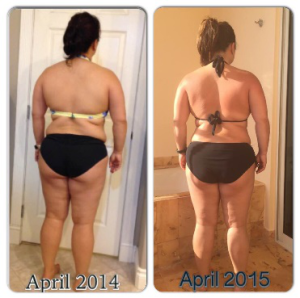 The most embarrassing thing I had to do to begin the process was take pictures of myself. It was humiliating. I did not want to do it, but I knew I had to know where I started to see any progress. So, I sucked it up and sent them away. I then spent the entire year working out and eating more. I learned that I needed to focus on more protein in my diet. Previously, I was lucky to even get 50g in a day. Now, I am taking in at least 150g/day. That was the only change in my eating that I have made other than increasing my calories to about 2200-2400 calories per day. I have been doing weight workouts 3-4 times per week and tried to increase my NEAT every day. I have been faithful to my workouts and have tried pushing my workouts to consistently make gains in strength. I was able to push through my old maximum lifts (Stronglifts) and create new PR’s. But, these changes pale to what has changed mentally for me.
The most embarrassing thing I had to do to begin the process was take pictures of myself. It was humiliating. I did not want to do it, but I knew I had to know where I started to see any progress. So, I sucked it up and sent them away. I then spent the entire year working out and eating more. I learned that I needed to focus on more protein in my diet. Previously, I was lucky to even get 50g in a day. Now, I am taking in at least 150g/day. That was the only change in my eating that I have made other than increasing my calories to about 2200-2400 calories per day. I have been doing weight workouts 3-4 times per week and tried to increase my NEAT every day. I have been faithful to my workouts and have tried pushing my workouts to consistently make gains in strength. I was able to push through my old maximum lifts (Stronglifts) and create new PR’s. But, these changes pale to what has changed mentally for me.
 My husband and I just came back from a trip to Mexico with the same friends we traveled with last year. It was amazing. It was the best time we’ve ever had together for me because I was able to get out of my own way. How I felt about myself before actually held me back from doing a lot of things because I didn’t want to be judged. I also was so embarrassed about how I looked that sometimes I pushed my husband away. It was no way to live. Punishing myself was one thing, but punishing the person who cared about me most was another.
My husband and I just came back from a trip to Mexico with the same friends we traveled with last year. It was amazing. It was the best time we’ve ever had together for me because I was able to get out of my own way. How I felt about myself before actually held me back from doing a lot of things because I didn’t want to be judged. I also was so embarrassed about how I looked that sometimes I pushed my husband away. It was no way to live. Punishing myself was one thing, but punishing the person who cared about me most was another.
Another huge motivation for me were my kids. I did a lot of reading and realized that how I would talk about my body was not the way I wanted my kids to talk about their bodies, especially my daughter. So, slowly, I made a conscious attempt at not beating myself up in the mirror especially in front of her. I began to look for things that did look nice, rather than picking apart my belly, or my rolls, I focused on positives like the little deltoids and triceps that began to peak out. Together we celebrate new muscles that are appearing or how my lifting is going. Often, returning from the gym, the first question I am asked is, “How was your workout, mommy? How much did you lift today?”
 Looking back at last year and this year, I’m in a completely different mindset. I know I have worked hard. I have eaten my protein pretty consistently and stopped the anxiety about when I’m going to be skinny. I used to say to myself, “It’s been 4 months, I am not remotely skinny. It’s not working.” But, I’ve learned that my body will do what it wants to do when it wants to do it. I cannot rush the process, but just go along for the ride. I know I am stronger, and I know I have more muscle, but the darn fat is slow to go. Unlike quick weight loss where the changes appear quickly on the scale, but do not last, slow and steady loss will require commitment even when the usual tools to measure progress are not working. I go to do my workouts not to get skinny, but because I know that it will help me get where I want to be. I have bought new clothes because my body has changed and I don’t worry about the size I’m buying because I look better in clothes that fit me. After all, no one sees the size or cares if it is a 10 because if it looks awful, it looks awful!
Looking back at last year and this year, I’m in a completely different mindset. I know I have worked hard. I have eaten my protein pretty consistently and stopped the anxiety about when I’m going to be skinny. I used to say to myself, “It’s been 4 months, I am not remotely skinny. It’s not working.” But, I’ve learned that my body will do what it wants to do when it wants to do it. I cannot rush the process, but just go along for the ride. I know I am stronger, and I know I have more muscle, but the darn fat is slow to go. Unlike quick weight loss where the changes appear quickly on the scale, but do not last, slow and steady loss will require commitment even when the usual tools to measure progress are not working. I go to do my workouts not to get skinny, but because I know that it will help me get where I want to be. I have bought new clothes because my body has changed and I don’t worry about the size I’m buying because I look better in clothes that fit me. After all, no one sees the size or cares if it is a 10 because if it looks awful, it looks awful!
I have learned to be kind to myself. I know what to do to keep myself from slipping into the negative thoughts. So, on this last vacation, we had fun because I ate the seafood and the desserts, I drank the water, I kept moving and enjoyed myself. I took in the sun, and allowed myself to try some fun things. I tried the pole dancing lessons, water aerobics with the activity crew, and my husband and I went kayaking on the ocean a couple of times. It was wonderful!! I realize finally how lucky I am to be where I am. I thought that I would not be happy until I reached my ultimate goal, but I realize now that I had it all wrong. I have to be happy with where I am so I WILL be able to reach my goals. And, although I’m far from where I want to be, I’m where I need to be.
 This year of slugging it out has made me realize that nothing that is worth something comes easy and that quick results are not always lasting results. I want to be able to sustain my changes and knowing that I don’t have to starve myself to do it still amazes me. I weigh exactly the same weight as I did a year ago, which may seem ridiculous to some people. But I haven’t gained any weight and I know I look better because the proof is in the pictures. Most importantly, I have been able to dump an entire lifetime of negative thinking which makes me feel that there is nothing I will not accomplish if I stick to what I know how to do. I have made some changes physically without starving myself and I will continue to make changes because I know I can do it.
This year of slugging it out has made me realize that nothing that is worth something comes easy and that quick results are not always lasting results. I want to be able to sustain my changes and knowing that I don’t have to starve myself to do it still amazes me. I weigh exactly the same weight as I did a year ago, which may seem ridiculous to some people. But I haven’t gained any weight and I know I look better because the proof is in the pictures. Most importantly, I have been able to dump an entire lifetime of negative thinking which makes me feel that there is nothing I will not accomplish if I stick to what I know how to do. I have made some changes physically without starving myself and I will continue to make changes because I know I can do it.
This mental shift is priceless and it makes me sad that I was so hard on myself all those years. I am able to admire others who are leaner, smaller or skinnier than myself because they are on their own journeys. I will no longer compare myself to someone else’s journey because we all have our burdens to bear. I know for the first time ever that I can sustain this way of life. For the first time, I’m truly happy, and I just want to thank the EM2WL family for all their support because without it, I would still be hiding and avoiding my own life.

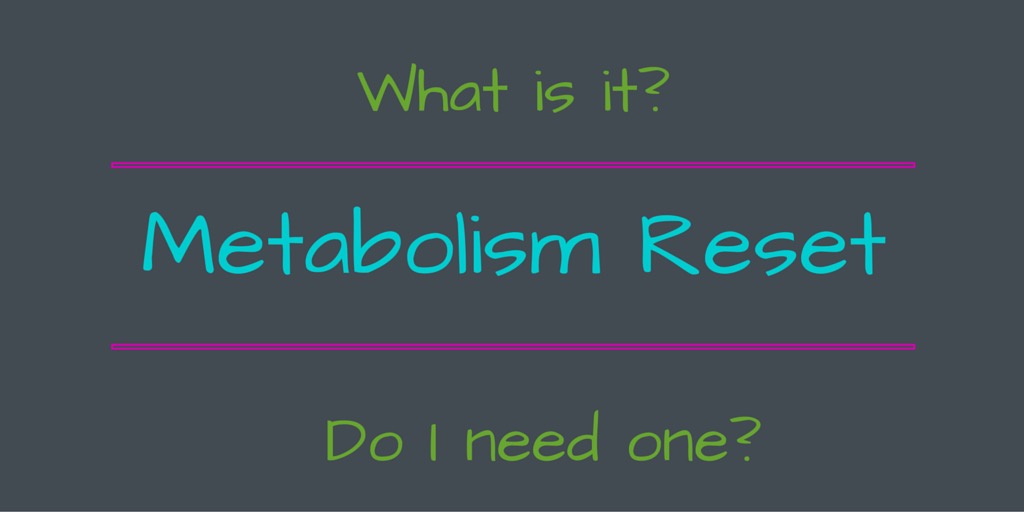
by EM2WL | Apr 21, 2015 | Increasing calories, Metabolism Reset, TDEE/BMR
Do I Need A Metabolic Reset?
If you are new to this concept of “eating more” and fueling your body properly, you undoubtedly have a lot of questions. You know you should eat  more, but how much? What is a metabolic reset? (And, do I need it?) How long will a reset take? Will this work for me, or am I that “special snowflake” that won’t have success with this? And then thoughts like “I got fat eating more. Why would I want to do that to lose weight?” start running through your mind. It’s enough to make you want to run for the hills!
more, but how much? What is a metabolic reset? (And, do I need it?) How long will a reset take? Will this work for me, or am I that “special snowflake” that won’t have success with this? And then thoughts like “I got fat eating more. Why would I want to do that to lose weight?” start running through your mind. It’s enough to make you want to run for the hills!
Just the idea of increasing calories is a terrifying thought for most people, especially when you have had the “eat less/move more” mentality drilled into your head for your whole life. We get it! We were all there once. Brainwashed by commercials with promises to get you into that skimpy bikini (or Speedo) by summer… The truth of the matter is that these diets will work for a little while, but then the end result is that your weight loss will stall as your metabolism gradually slows down to match the intake. This is the point when most of us start doing some research and realize we have been under-feeding our bodies and need to reverse the tides…
After deciding to take the plunge into the world of Eat More 2 Weigh Less, one of the first questions many people have is: “Do I need to do a metabolic reset?” Well, the answer to this question is as individual as the person asking it.
 ○ Those with a recent history of eating consistently over their TDEE should be able to calculate their TDEE, jump right in at a 15% cut, set their macros at 40/30/30 (40% Carbs, 30% Protein, 30% Fat), and begin the process fairly quickly. These people have been over-eating and have most likely not compromised or slowed their metabolisms in any way, so their bodies should respond quite well to a small deficit. This is the easiest case scenario… No metabolic reset necessary, as they have essentially already done it by previously over-eating!
○ Those with a recent history of eating consistently over their TDEE should be able to calculate their TDEE, jump right in at a 15% cut, set their macros at 40/30/30 (40% Carbs, 30% Protein, 30% Fat), and begin the process fairly quickly. These people have been over-eating and have most likely not compromised or slowed their metabolisms in any way, so their bodies should respond quite well to a small deficit. This is the easiest case scenario… No metabolic reset necessary, as they have essentially already done it by previously over-eating!
○ However… Those who come from long term low calorie dieting, binge/restrict cycles, eating disorders…etc. will have a very different process to go through as their bodies and brains adapt and finally accept the increased caloric intake. Often, years of severe caloric restriction will have resulted in a suppressed metabolism … one which has slowed down to match the decreased intake. When we consistently eat at a caloric deficit, the body will naturally assume that this deficit is now maintenance and downshift the metabolism to meet this demand. If this is your case, a reset is highly recommended.
Potentially, you could go right to that 15% cut in hopes that you would see results, but most likely, you will just be prolonging the process. You see, as you slowly increase your calories to that 15% cut, your body will simply adapt and reset at this 15% cut level, seeing that as the new “normal”. You will have, in fact, reset to your cut value, and therefore, the body will not see it as a cut. From that point, the only real option is to do a true reset, where you eat at TDEE or Maintenance calorie levels for a prolonged period of time (more about this later…) And THEN, once the body has accepted your intake at TDEE as normal, when you introduce that small 15% deficit, the body should react positively by shedding some fat.
SO, if you have been dieting for a prolonged period of time, suffered from an eating disorder or even cycles of binging followed by severe caloric restriction, do yourself a favor and work your intake slowly up to TDEE and take the time to do a metabolic reset. This process will give your body a break from the stress of dieting and allow it to become accustomed to eating proper amounts of food again. If you don’t do it at the onset, most likely you will be doubling back and doing it somewhere further down the road when you don’t see the results you were hoping to see. Skip this vital step, and you will most likely be prolonging the length of your journey rather than speeding it up.
How to Find Your “True” TDEE
So… you have decided that you need to do a metabolic reset in order to get your metabolism back up and running where it should be. Now what?
The first thing that you need to in order to start this process is to determine your TDEE (Total Daily Energy Expenditure). Your TDEE is the amount of calories that your body requires to maintain your weight. That (TDEE) figure includes your BMR (Basal Metabolic Rate) as well as your normal day-to-day activities plus any formal exercise. In theory — based on this definition — if we eat at our TDEE, we will maintain our weight. The problem is that this theory does not always hold true. When we have been under-eating and over-exercising, our body will adapt to this stress. In an attempt to maintain homeostasis, it will down-regulate the metabolism to match the decreased intake. The result will often be a suppressed metabolism. This explains why suddenly you may find yourself gaining weight while doing hours of cardio and eating 1,200 calories or less a day … your body has adapted! You have decreased your intake and increased your exercise for a long enough period of time that the body has finally slowed down your metabolism to match the intake. Your body is doing what it is supposed to do = maintain homeostasis.
To get your metabolism back up and running where it should be, you’ll need to increase your caloric intake back up to TDEE, or do a Metabolic Reset. To begin this process, the first thing you will want to do is enter your stats into the EM2WL weight loss calculator to get your TDEE (maintenance) calories. This will give you an idea of what your ultimate goal will be. But remember that these calculators just give you estimates. They are subject to error based on how much exercise you input into the calculator and how active you truly are. Many newbies to EM2WL lead very active lives, and may actually burn a lot more through their day-to-day activities. If they simply enter in the 4 hours of formal exercise that they do each week, their final TDEE estimate may actually be too low.
Alternatively, you can use an on-body device such as a FitBit, or Apple Watch to get an idea of how much you burn each day. These are likely 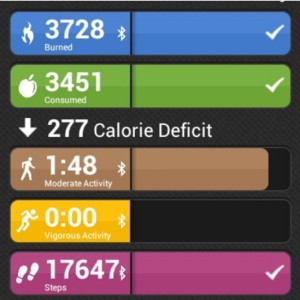 more accurate than the calculators, just because they’re monitoring how much activity you actually do each and every day. However, these devices are also not 100% accurate because they don’t accurately calculate calories burned from your strength training workouts.
more accurate than the calculators, just because they’re monitoring how much activity you actually do each and every day. However, these devices are also not 100% accurate because they don’t accurately calculate calories burned from your strength training workouts.
So, where does this leave you? How do you figure out your “true” TDEE? You have your TDEE estimate and/or your “on-body device” average, but ideally you will also test out these numbers and make sure they are truly accurate for you.
The normal process for doing a Metabolic Reset involves increasing your caloric intake up to your calculated TDEE and staying at that level for a minimum of 8 – 12 weeks (much longer if you come from a history of severe dieting or caloric restriction). We generally recommend that you make this increase slowly, adding approximately 50-100 calories to your daily intake each week. Of course, you can certainly jump right up to TDEE quickly (“rip the band-aid”) or make those increases more substantial, but you may find the increases on the scale to be discouraging. By making the increases more gradually, you can often avoid some of the gains seen during the “rip the bandaid” approach. We leave this to the individual as a personal decision.
Now, back to the original question … “How Do I Find My True TDEE?” In order to do this, you will most likely need to go through a trial and error process. You have your calculated TDEE, but how do you figure out if that is “true” or not? As you are going through the process, gradually increasing your daily caloric intake 100 calories a week, keep an eye on the scale. Generally, as you make these increases, you may see the scale jump up a pound or two, and then during the course of the week, it will generally trend back downwards, often ending up right back where you started, pre-increase. As you get closer and closer to your calculated TDEE, you may find that it takes a bit longer for your weight to stabilize and drop back down. At this point, if you find that happening, you may want to take it a bit slower. Then if your weight has not stabilized and dropped back down by the end of the week, wait until it does before making any further increases.
Once you are at or near your calculated TDEE, watch for slow and steady increases on the scale which do not stabilize over time. If you do start seeing gains like this, you have most likely surpassed your TDEE, and which point you can back down on your intake by 100 calories or so and you should be right there — at your true TDEE.
What many people find is that their actual TDEE may be higher than what they get with the calculators. Often their day-to-day activities (chasing kids, doing laundry…etc.) makes them more active than the activity level that they chose when inputting their data into a calculator. We often tend to underestimate how active we are. Many people find that they are actually able to eat 100 or 200 calories more than the calculators give them, simply by “testing the waters” and not blindly accepting those numbers as accurate.
So, give it a try! Surely by now, you have resigned yourself to the fact that this is not a fast process, so take the time to make sure you know your “true TDEE.” Don’t blindly trust the calculators, test it out and see how much you can really eat before you start seeing true gains. Ignore those monthly fluctuations and the jumps that occur after increasing your intake. Keep pushing your intake higher and higher until you start to see slow, steady gains that do not stabilize over time. As hard as it may be, don’t worry about gaining. You can always just drop your intake down and those gains will stop. Remember: nothing that you are doing during this process is irreversible. Take the time to do it right … right from the beginning. You won’t regret it!
When Does My Reset Start?
You have finally gotten brave and decided to do a metabolic reset. You have diligently upped your intake slowly to your calculated TDEE level.

You added 100 calories on each week, and faithfully continued this process until you got your intake from rock bottom all the way up to your maintenance calories, maybe taking months to get to this point. Yay! Now you have reached TDEE, and you are ready to cut, right? NO. Now, this is the point where your metabolic reset actually begins. This is the point where the healing of body and mind starts to take place as your body begins to trust that this new, increased intake will be consistent, and not just another fluctuation, like so many times in the past. Yes, you have just spent what is possibly a few months getting your intake up to maintenance levels, but technically, your reset has not yet begun until now.
Now, you will need to stay eating consistently at TDEE levels for a minimum of 8 – 12 weeks, possibly longer if you come from a long history of severe caloric restriction. Some people have found it takes as long as a year to become fully healed and ready to move on. This part of the journey is as individual as the person taking it. Everybody is different and one size certainly does not fit all. Use this time to introduce strength training into your life, if you haven’t already done so, and enjoy the benefits of building some muscle (which really is possible now that you are finally eating at TDEE). Sit back and truly learn to love eating more.
When Is My Reset Over?
Okay, so you didn’t rush the metabolism reset. You have eaten diligently at maintenance levels for two, three, eight, maybe even twelve months. Congratulations! Now, how do you know when it is over? How do you know when it is the right time to cut?
There are a few key things to look at when making that decision:
○ One thing to consider is the mental aspect of the journey. For many, it is just as important as the physical part. Hopefully, during your reset you have changed the way you view your food. Food is no longer the enemy, and you have begun to see and appreciate it as a much-needed source of fuel. You have learned to no longer fear carbs or fats, and instead fit them in to your daily life (yes, even chocolate!). We feature a lot of Success Stories from EM2WL followers on our website, and hopefully when you read them you have noticed the mental transitions that had to take place both before and during the reset process. This is a vital part of the process. If you have not fully embraced eating more, then you are not ready for a cut.
○ Are you rushing to finish your reset? Are you in a hurry to start that cut? Are you counting down the days until you can introduce that 15% deficit and begin your weight loss journey? If this is you, then you are most likely not ready. At least not mentally…. When your reset is over, you will know it. You will have fully accepted that this is your new way of life. In fact, when you are ready, you will actually be dreading the day you have to give up any calories! Suddenly that 15% deficit will seem huge and you will be contemplating starting with just a 10% cut, or maybe even 8%, or 5… You get the idea :-)
○ As far as the physical aspect, if you have been eating at an extreme deficit prior to beginning your reset and had symptoms of metabolic damage such as fatigue, hair loss, brittle nails, low body temperature and/or loss of menstruation, you should begin to see all of these improving. Seeing improvements in these areas is a good sign that your body is recovering and now using those additional calories for normal maintenance functions, and not simply the vital ones.
 ○ Your weight will have stabilized. Often, the reset process comes with some associated weight gain. Some of that is water, as glycogen stores are refilled. Some of it may come from other sources. When we subject our bodies to severe caloric restriction and excessive cardio, the weight that is lost is not all necessarily fat. The weight that is lost can also be from muscles, tendons, ligaments and even brain tissue! As we begin to re-feed and nourish our bodies properly, the body will begin to rebuild that muscle, tendon, ligament and brain tissue and that will show up as a gain on the scale. Note: this is just another reason to not rely on the scale as your sole method for gauging success. Not all scale losses are good ones! … I mean, who wants to lose brain tissue?!
○ Your weight will have stabilized. Often, the reset process comes with some associated weight gain. Some of that is water, as glycogen stores are refilled. Some of it may come from other sources. When we subject our bodies to severe caloric restriction and excessive cardio, the weight that is lost is not all necessarily fat. The weight that is lost can also be from muscles, tendons, ligaments and even brain tissue! As we begin to re-feed and nourish our bodies properly, the body will begin to rebuild that muscle, tendon, ligament and brain tissue and that will show up as a gain on the scale. Note: this is just another reason to not rely on the scale as your sole method for gauging success. Not all scale losses are good ones! … I mean, who wants to lose brain tissue?!
As you have worked your way through the reset process, chances are, your weight may have fluctuated. A lot. By the time your reset is complete, these fluctuations should have stabilized. Yes, you will still have those ups and downs caused by water retention following a high sodium day, or water retention due to DOMS following a heavy lifting day, or that normal 3 – 5 pound gain many see around TOM, but overall your weight should be holding fairly stable.
○ By the time you are ready to cut, all of those overly full, bloated feelings that you may have experienced as you increased your calories should have subsided. You should feel comfortable eating at your Maintenance calories (TDEE). You should not feel like an over-stuffed turkey on Thanksgiving, in fact you should feel hungry again! These are all signs that your metabolism has returned to a normal state.
No matter what your dieting history, EM2WL will work for you. It is all just a matter of doing your research, figuring out your “numbers” and determining what plan will be correct for you, and then putting that plan in place to get you to your caloric goal. Each person’s plans will be different. Some people will see results in as little as 4 – 6 weeks, while others may take as long as a year, depending on their dieting history (the more severe the dieting history, the longer the “metabolic healing” can be expected to take). Research and patience will be key, in either case. And, if you need help along the way, EM2WL is here to help with our online courses and coaching programs.
Plugin by Social Author Bio

 What lift/exercise is the ultimate test of strength?
What lift/exercise is the ultimate test of strength?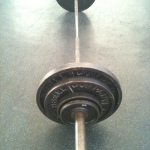

























Recent Comments